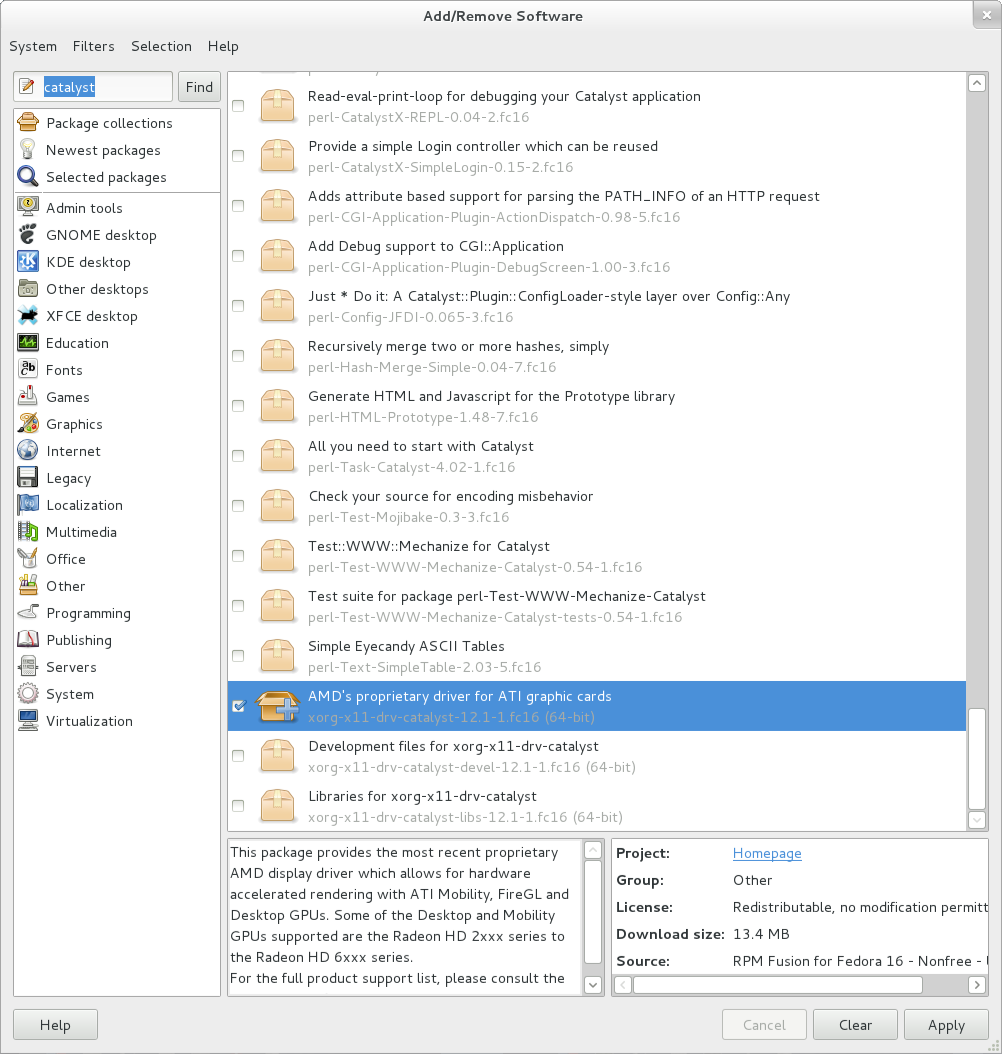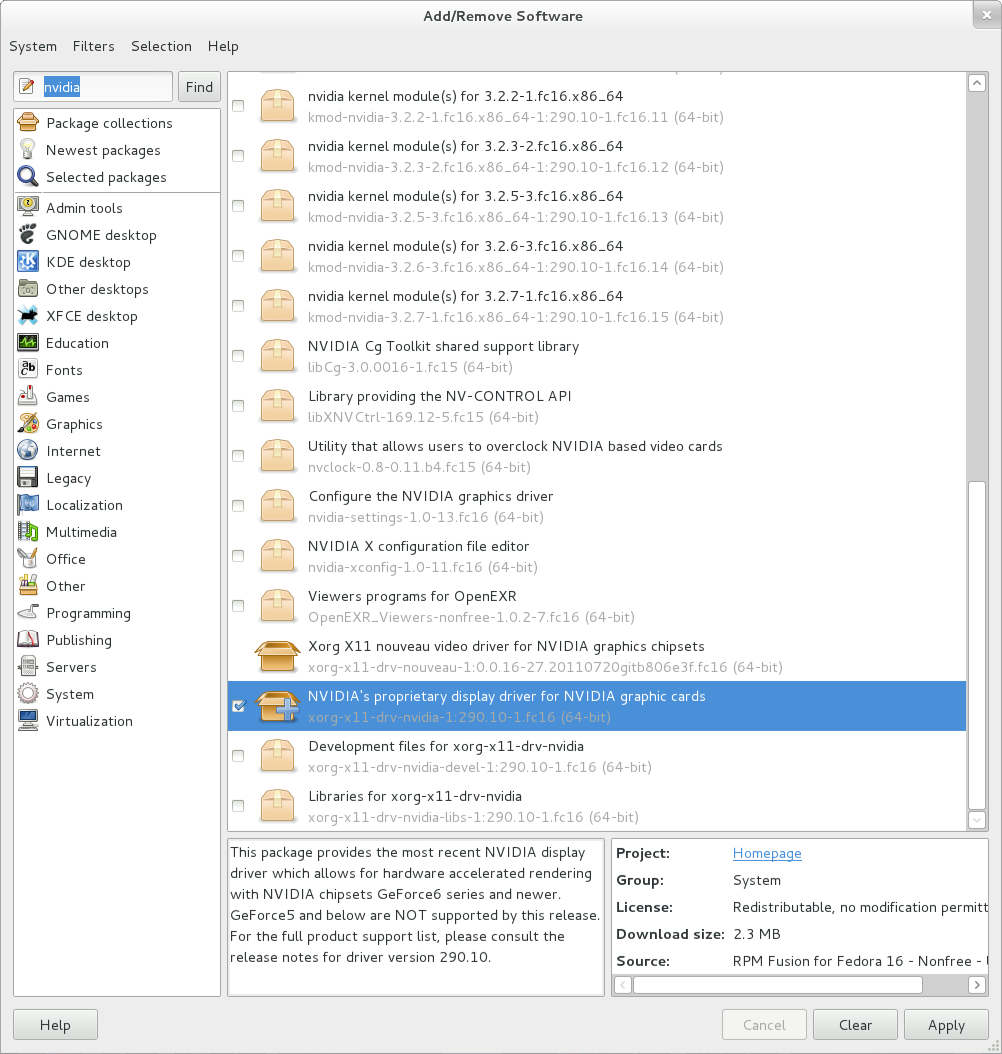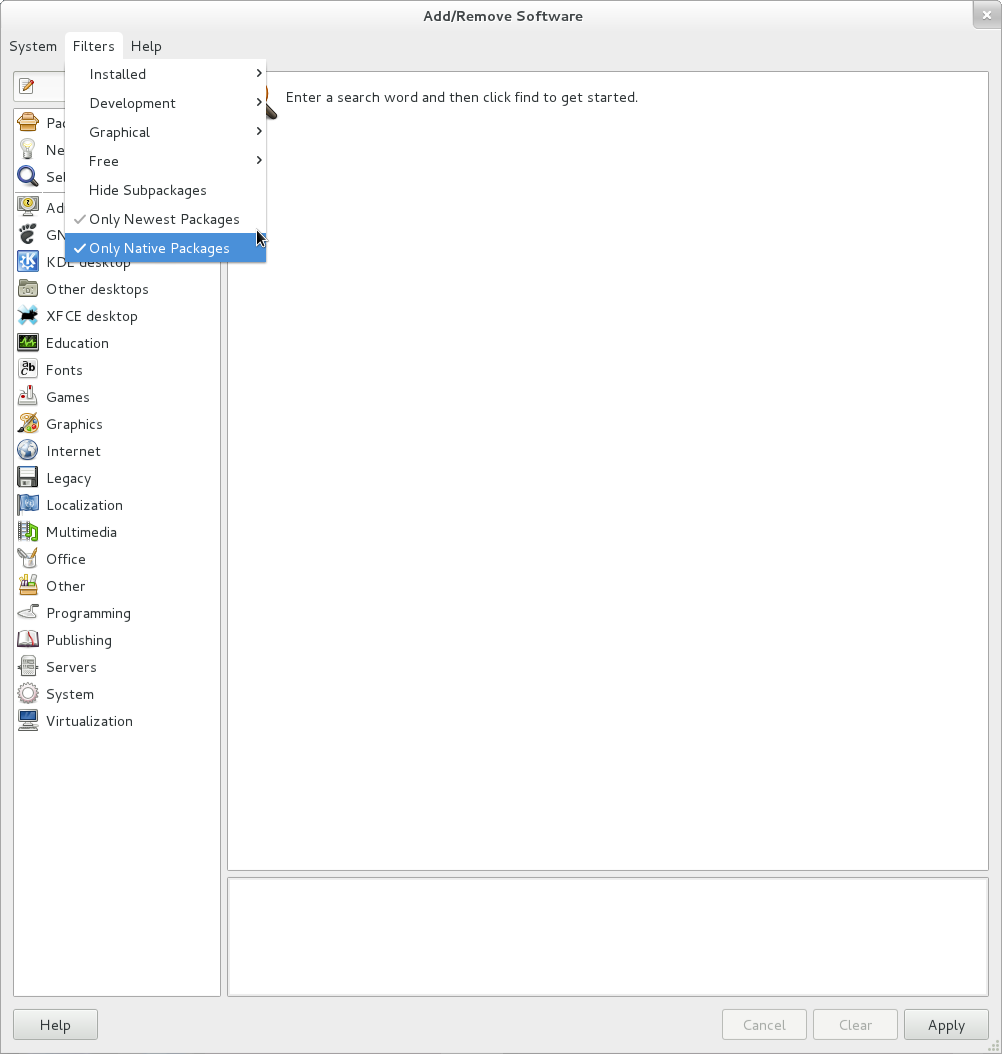Fedora 16 And GNOME Shell: Tested And Reviewed
Ubuntu and Mint don't want it; Linus called it an “unholy mess.” While most other distros are passing up or postponing GNOME Shell, Fedora is full steam ahead. Does Red Hat know something the rest of us don't? Or is GNOME 3 really as bad as everyone says?
Graphics, Wi-Fi, And 32-bit Libs
Graphics Drivers
As explained earlier, one of the drawbacks to a 100% FOSS distribution like Fedora is the way it handles proprietary drivers. Even the most common drivers, like those for AMD and Nvidia graphics cards, must be installed and configured the old-fashioned way. Unlike the RPM Fusion repos, there are no handy RPM files. And unlike Ubuntu, there isn't a nice graphical wizard to help you out. Fortunately, if you added the RPM Fusion repos, installing AMD or Nvidia drivers doesn't require the command line.
If you opted for the EasyLife route and checked off the appropriate drivers, you can skip ahead to the next step.
For AMD/ATI cards, simply search for "catalyst" in Add/Remove Software and select AMD's proprietary driver for ATI graphic cards.
For Nvidia cards, search for "nvidia" and choose Nvidia's proprietary display driver for Nvidia graphic cards.
Both require a restart in order for the new driver to take effect.
Wi-Fi
Get Tom's Hardware's best news and in-depth reviews, straight to your inbox.
The Dell Inspiron Mini 10v that we use for our general mobile experience has a Broadcom B43-series Wi-Fi chipset. While this chip is automatically detected in Ubuntu, Fedora has no mechanism akin to Ubuntu's Additional Drivers utility. If your Wi-Fi doesn't "just work" out-of-the-box, you need to set it up yourself.
Wi-Fi can be a bit of a pain to get working in Fedora because it does require the command line. Launch the CLI from the Applications side of the Activities overview. As with Ubuntu and most GNOME-based distros, Terminal is the name of the command line application in Fedora 16.
While most new Linux users won't feel comfortable using the command line, this is the only way to get your Wi-Fi up and running in Fedora. If you prefer graphical setup wizards, a 100% FOSS distribution just isn't for you.
To get most proprietary Wi-Fi drivers working in Fedora, first obtain the Windows version of the driver. Linuxwireless.org is the place to go for these. Once you have the driver on your machine, open a terminal and enter the appropriate code snippets provided in the device firmware installation section for Fedora.
The procedure for setting up the popular Broadcom Wi-Fi chipset found in our netbook test system is as follows:
su -yum install wgetyum install b43-fwcutter wgetexport FIRMWARE_INSTALL_DIR=”/lib/firmware”wget http://www.lwfinger.com/b43-firmware/broadcom-wl-5.100.138.tar.gztar xjf broadcom-wl-5.100.138.tar.bz2sudo b43-fwcutter -w "$FIRMWARE_INSTALL_DIR" broadcom-wl-5.100.138/linux/wl_apsta.o
64-bit Issues
It's been a while since we had any major issues with the 64-bit version of Ubuntu or any other consumer-oriented Linux desktop. But again, Fedora is somewhat of a throwback to days past. Thirty-two-bit packages don't just work on the 64-bit build of Fedora. And, unlike Ubuntu and other Debian-based distributions, Fedora has no simple method for adding 32-bit libraries to a 64-bit system. On a Debian-based distro, you get around that with a single line of code. In Fedora, each 32-bit library has to be installed manually. The only way to know which library you need is to hit a wall installing applications (or do some preliminary research). If a piece of software won't install, try using the command line. The terminal outputs any errors caused by missing libraries, at which point you can install them from either Terminal or Add/Remove Software.
The Terminal method goes like this:
sudo yum install FULL-LIBRARY-NAME
To install 32-bit libraries on a 64-bit platform via Add/Remove Software, you must first get 32-bit packages to appear in the search results. To do this, open Add/Remove Software, click on Filters in the menu bar, and then uncheck Only Native Packages.
Now you're able to search for and install 32-bit packages on a 64-bit installation.
Current page: Graphics, Wi-Fi, And 32-bit Libs
Prev Page Repos, Flash, Java, And Codecs Next Page GNOME 3 And GNOME Shell Basics

